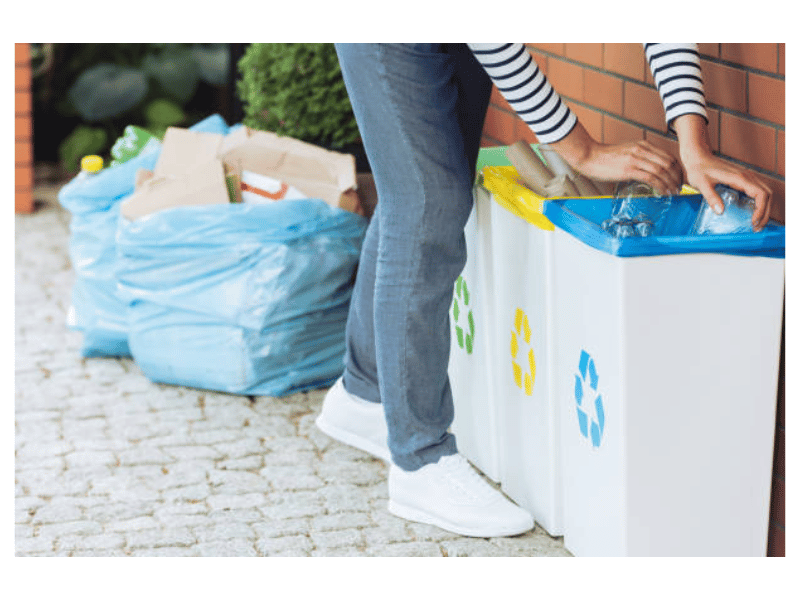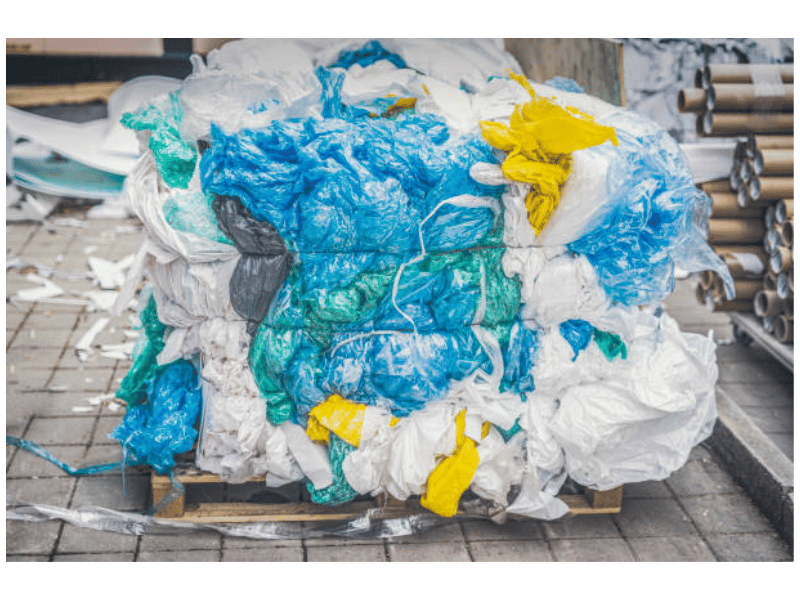Unwrapping the Future: The Growth of Plastic Film Recycling
Everyone has been talking about how over the last twenty years, Amazon’s annual revenue has continued to grow each year, but has anyone stopped to consider what this means for plastic film consumption? Plastic film is heavily used in Amazon Orders, whether it is the poly mailer that the product is shipped in, the shipping bubbles used to keep your items in place, or plastic bags to simply hold your items while they’re in the box.
Whether it’s from receiving plastic from Amazon, buying produce at the grocery store, getting clothes from the dry cleaners, or buying one of the many other products that contain plastic film packaging, you’ll most likely throw away plastic film and think nothing of it. However, with the abundance of plastic in our daily lives, it is important to think about what we can do in order to ensure these products do not become dangerous microplastics. While it is common for other plastic products such as soda bottles, food containers, toiletry bottles, and such to be recycled, due to their compatibility with curbside recycling programs, recycling for plastic film is a bit more challenging. However, while you may have to bring your plastic film to a specified drop-off location, that doesn’t mean the process is not worth it. It is now easier than ever to recycle plastic film, with more and more stores opening drop-off boxes, now is the perfect time to start being more mindful of what you do with your excess plastic.
What is plastic film?
Taking a step back from the recycling process, it is important to understand what plastic film is. While plastic film can be made from a couple of different materials, the most common is Polyethylene. Finished plastic film products can range up to 10 mils in thickness (1 mil = 0.001 inch), but are most commonly between .7 – 1.5 mils. To add a point of reference, the average bank card is 30 mils thick. Because of the thin nature of plastic film, the material is lightweight, cheap to produce, and finds itself used in many different products. Some of these include bags for clothing, air bubbles for shipping, plastic grocery bags, bread bags, case overwraps, newspaper sleeves, ziploc bags, and product wraps. With a number of different uses for plastic film, it is no surprise that plastic film was responsible for 6 percent of total packaging materials, 43 percent of all plastic-based packaging, and 17.5 percent of the entire plastic content found in waste streams, during the last decade.

Given that Americans alone use an estimated 100 billion plastic film bags each year, It is understandable that such large quantities of this plastic end up in waste streams. Understanding the consequences of this buildup is crucial. Plastic film, being non-biodegradable, undergoes a process known as photodegradation. This means that instead of decomposing naturally, these materials can persist in landfills for centuries, eventually breaking down into harmful microplastics. Since these microplastics will only be millimeters wide, they can be carried away due to different weather conditions, and end up in soil and waterways. Once these microplastics enter our ecosystems, they pose a significant threat to both wildlife and humans. The specific health implications of microplastic ingestion in humans are still being studied, but why deal with potential risks, when we could simply reduce and or manage our plastic waste effectively.
What happens once your plastic film is recycled
In the year 2021, the United States alone managed to collect 1106.2 million pounds of plastic film that was going to be recycled. This amounted to 21.8 percent of the total plastic collected for recycling across the U.S. This number has been steadily increasing in recent years, alongside the percentage of plastic film that is recycled in North America, as opposed to being exported overseas. In 2021, a remarkable 83.1% of the plastic film collected in the U.S. remained in North America, a large increase from the approximately 40% that was recycled locally in 2012. It is clear that the U.S. is on the right track in terms of plastic film recycling, which highlights the growing awareness and commitment towards sustainable practices. However we can still do more, and it is never too late to join in on the newest trend.

Once you recycle your plastic film there are a plethora of different products that it could become. As of 2018, the most popular products built using materials made from recycled plastic film were lumber and decking products. This accounted for 46 percent of the products made. Another option is to turn the used plastic film into a new plastic film. This is also quite common, with 34 percent of the recycled material becoming this. Additionally, using a process called injection molding, the recycled material can be used to make plastic parts. By using a mold, that is then filled with the molten plastic, the plastic can be shaped to make many unique parts. This uses approximately 12 percent of the recycled plastic. There are many different options on how this new material can be used. This is why the remaining materials are spread across many different products. If you are interested in finding out more about products that use recycled plastic film or other recycled materials, you can visit the recycled products directory. Here you will see all the interesting products your old poly mailers can become one day.
Call to action
One of the simplest ways to manage our plastic waste is to simply recycle it. As we’ve previously mentioned, this is not done through a curbside recycling program, but instead by going to one of the over 18,000 designated drop-off sites across the U.S. This is because when mixed in with the other materials that are included in a curbside program, the plastics can become tangled while in the equipment at material recovery facilities. This has the potential to damage the recycling equipment, and ultimately lead to the plastic film ending up in a landfill. Finding a drop-off location can be done by either looking at the list of NexTrex recycling partners or by using Earth 911 Recycling Search. When using this tool, all you have to do is select the material you are trying to recycle and input your zip code. Once you do this, you will be provided with a list of nearby drop-off locations. Additionally, this site can be used to find locations for other recycling facilities, such as electronics.

Before you head off to your local recycling facility, it is important to note that not all plastic film is the same. The majority of the plastic film recycling drop-offs will only accept number 2 and number 4 plastics. Some may also require that the number be printed on the film. Because of this, it is important to read any signs located next to the drop-off location, or potentially ask an associate. When getting ready to dispose of your plastic waste, the first step is to look to see if recycling numbers are anywhere on the plastic. Additionally, if you do not see any recycling numbers on your product you can test to see if the plastic will stretch easily when you pull it with your hands. If the plastic stretches then you can recycle it, however, if there is resistance you should try to reuse the plastic or dispose of it elsewhere. Another area to consider before dropping off your plastic is the condition it is in. All plastic must be clean, dry, and free of food residue, paint, stickers, or scannable labels to ensure it does not contaminate the rest of the items.
About the Author: Eric Braun is a service specialist intern for the summer at the Lesniak Institute for American Leadership. Eric is a student at the Rutgers Business School and is currently studying Business Leadership and Management.
Categories
More Stories
- Inspiring Change: A Step-By-Step Guide to A Campus Activism Event
- Advocacy Through Social Media: Extending Beyond Your Platform
- Unwrapping the Future: The Growth of Plastic Film Recycling
- My Visit To The State House in Trenton
- Lost Childhoods: Exposing the Triad of Illegal Immigration, Child exploitation, and Abuse
- The Realities of The Homeless Crisis
- WHO RUNS THE WORLD: Women Who Advocate for Diversity, Equity, and Inclusion

